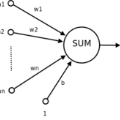Disaggregation modelling is a method of predicting disease risk at high resolution using aggregated response data. High resolution disease mapping is an important public health tool to aid the optimisation of resources, and is commonly used in assisting responses to diseases such as malaria. Current disaggregation regression methods are slow, inflexible, and do not easily allow non-linear terms. Neural networks may offer a solution to the limitations of current disaggregation methods. This project aimed to design a neural network which mimics the behaviour of disaggregation, then benchmark it against current methods for accuracy, flexibility and speed. Cross-validation and nested cross-validation tested neural networks against traditional disaggregation for accuracy and execution speed was measured. Neural networks did not improve on the accuracy of current disaggregation methods, although did see an improvement in execution time. The neural network models are more flexible and offer potential for further improvements on all metrics. The R package 'Kedis' (Keras-Disaggregation) is introduced as a user-friendly method of implementing neural network disaggregation models.
翻译:分层建模是一种使用聚合响应数据来预测疾病风险的方法。高解析度疾病映射是一种重要的公共卫生工具,它可以帮助优化资源,并在应对疟疾等疾病时得到广泛使用。目前的分层回归方法缓慢、不灵活,不易允许非线性项。神经网络可能为当前分层方法的局限提供解决方案。本项目旨在设计一个模仿分层模型行为的神经网络,并将其与当前方法进行准确性、灵活性和速度基准测试。交叉验证和嵌套交叉验证测试神经网络和传统分层的准确性,并测量执行时间。神经网络并未提高当前分层方法的准确性,但执行时间得到了改善。神经网络模型更灵活,具有进一步改善所有指标的潜力。本文引入了R软件包'Kedis'(Keras-Disaggregation),作为实施神经网络分层模型的用户友好方法。



